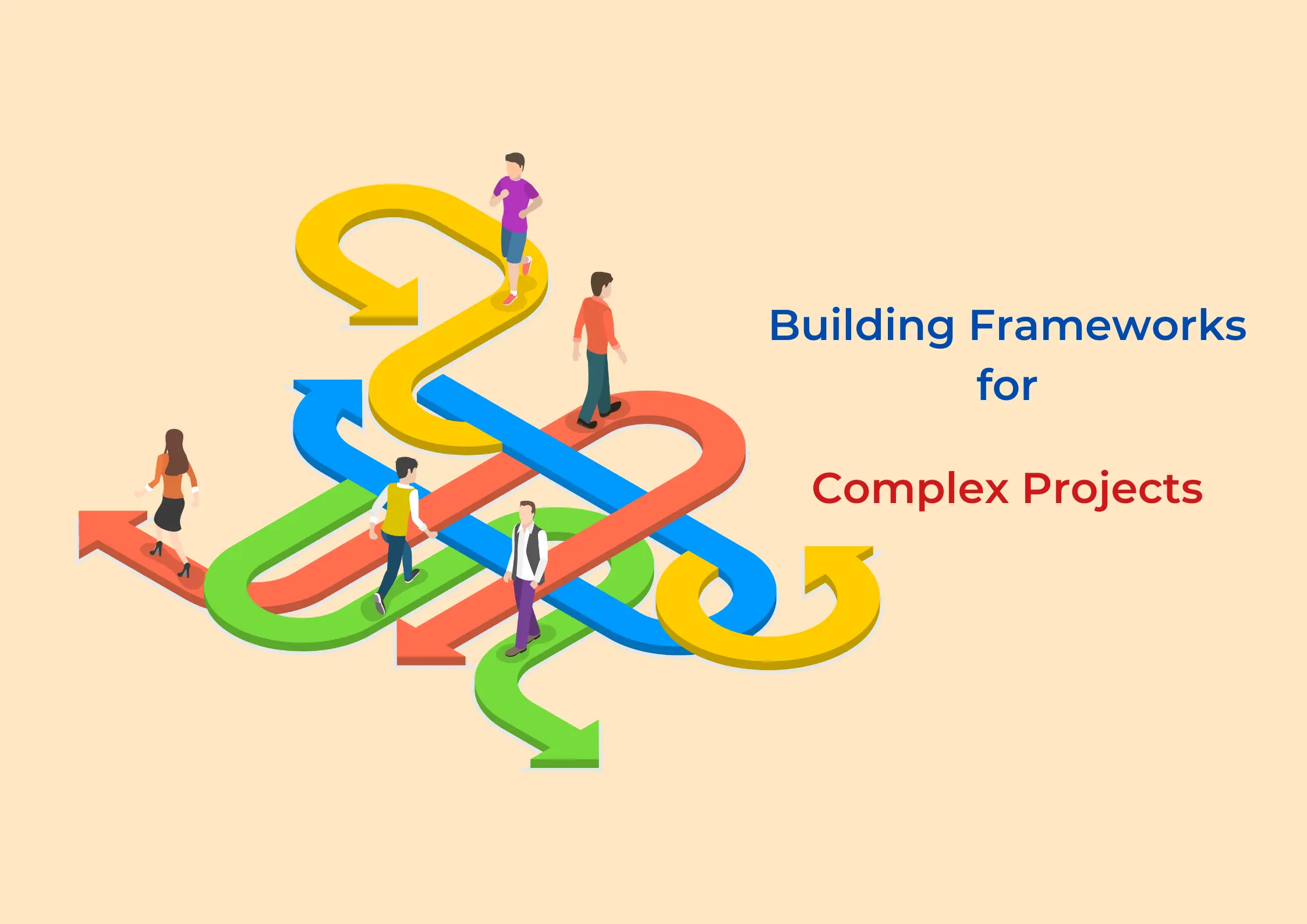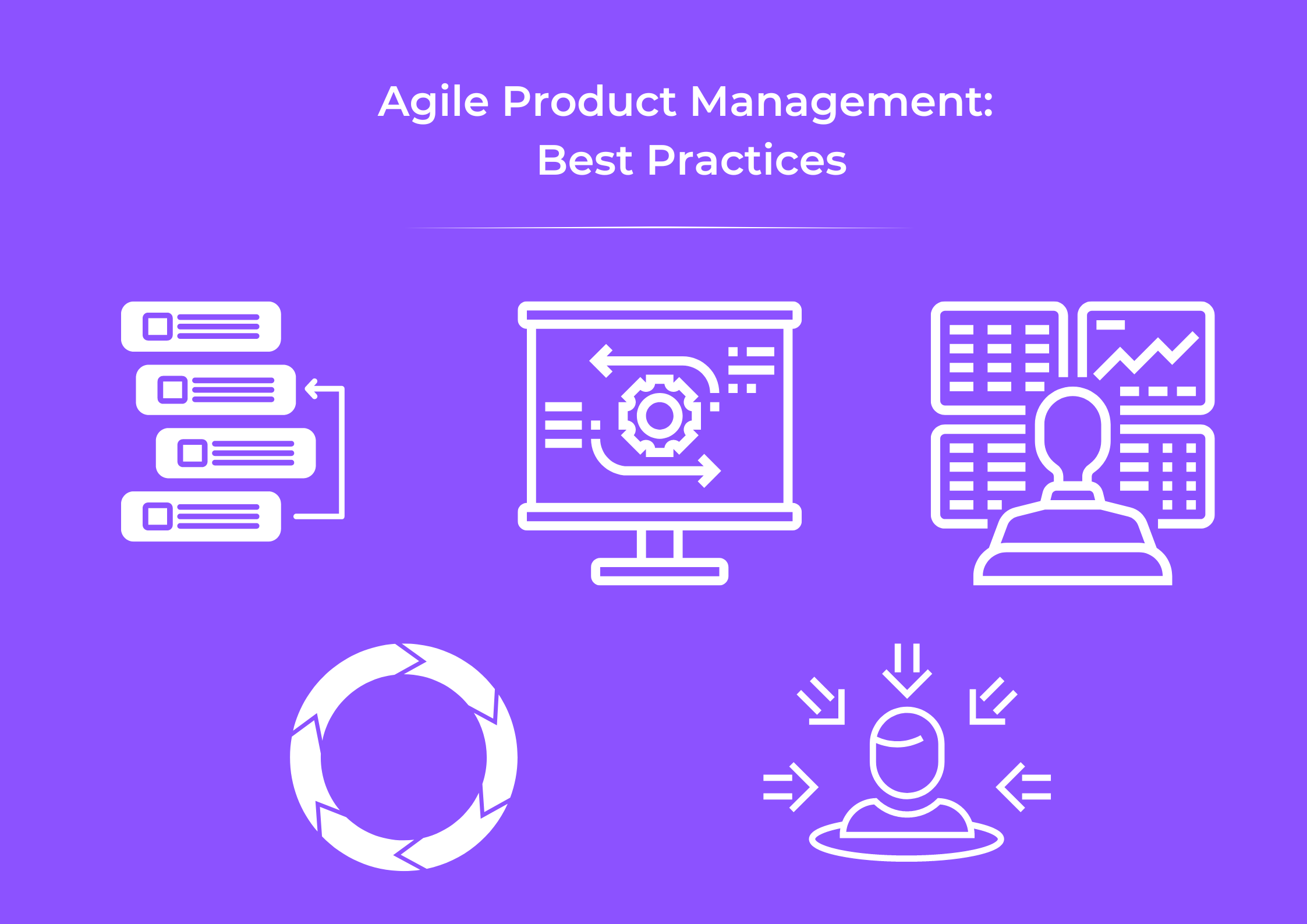📢 Sign up to my newsletter and never miss a beat!
When faced with complex projects, building frameworks tailored to their specificity and complexity is essential for delivering value for your product consistently and efficiently. Complex projects often require juggling multiple moving parts—managing stakeholders, balancing diverse technical requirements, and navigating various regulatory or organizational constraints. For product managers, the challenge lies in maintaining clarity and direction amid this complexity.
A well-designed framework provides structure and guidance, ensuring that teams stay aligned, risks are managed, and goals are achieved. In this article, we’ll explore the foundational elements of building effective product management frameworks for complex projects. We’ll also delve into how these frameworks can be customized to meet unique challenges, supporting product managers in delivering impactful outcomes while keeping teams and stakeholders on the same page.
1. Understanding Complexity in Product Management
Complex projects in product management come with a unique set of challenges, which often include coordinating with diverse stakeholders, managing high technical demands, and navigating regulatory constraints. Each of these elements introduces specific complexities that require structured approaches and proactive planning.
Defining Project Complexity
Projects become complex when they involve:
- Diverse Stakeholders: In large, multi-faceted projects, product managers work with a wide range of stakeholders, including engineers, designers, executives, customers, and regulatory bodies. Each group brings its own expectations, priorities, and levels of influence, which can create challenges in aligning everyone toward a common goal.
- High Technical Demands: Integrating new technology, ensuring cross-platform compatibility, and working within the constraints of existing systems all add to project complexity. Each technical decision can introduce risks or require additional resources, making it essential for product managers to balance innovation with feasibility.
- Regulatory Constraints: For industries like healthcare, finance, and telecommunications, regulatory compliance is critical. Meeting these requirements while still building a user-centered product often requires collaboration with legal experts and careful adherence to industry standards, adding layers of coordination and oversight.
Why a Structured Framework is Crucial
A well-designed framework provides the structure needed to handle these complexities and guide projects to successful outcomes. Here’s why it’s indispensable for complex projects:
- Clarifying Objectives and Priorities: A framework helps teams set clear objectives from the start, outlining the scope of the project and prioritizing tasks. This ensures everyone is aligned on what the project aims to achieve and helps avoid scope creep and misaligned expectations.
- Managing Risks Proactively: Complex projects are inherently risky. Delays, unexpected technical setbacks, and budget overruns are common pitfalls. A structured framework allows product managers to identify potential risks early, set up mitigation strategies, and continuously monitor for issues that could impact timelines or budgets.
- Supporting Informed Decision-Making: When decisions involve trade-offs between competing priorities, a framework provides a structured approach to evaluate options and make informed choices. This is especially valuable in complex projects where decisions require stakeholder buy-in and alignment.
- Facilitating Consistent Communication: Clear, consistent communication is vital for success in any complex project. A framework establishes a cadence for updates and feedback, ensuring that all stakeholders are informed and engaged at every phase. This helps avoid misunderstandings and keeps everyone aligned toward the project’s goals.
In complex projects, a framework doesn’t just organize tasks—it also ensures that product managers and teams can navigate challenges, make informed decisions, and achieve their objectives despite uncertainty and evolving requirements.
2. Core Components of an Effective Framework
When tackling complex projects, a successful framework is built on a few key components that ensure alignment, prioritization, and risk management. These components are adaptable and scalable, enabling product managers to apply them across various projects while tailoring them to specific needs.
1. Objectives and Key Results (OKRs)
For any complex project, it’s essential to establish clear and measurable goals from the outset. Objectives and Key Results (OKRs) provide a focused approach, defining both high-level objectives and the specific outcomes that signal progress toward those objectives. For example, an objective might be to “Increase user engagement,” with key results such as “Achieve a 30% increase in daily active users” or “Reduce bounce rates by 20%.” OKRs ensure that everyone is working toward the same goals and has a shared understanding of success metrics.
2. Prioritization Models
With complex projects, there are always multiple competing priorities. Product managers need to decide where to focus resources and what features or tasks to tackle first. Various prioritization models are invaluable here:
- RICE (Reach, Impact, Confidence, Effort): This model scores tasks by their potential reach, impact on the user or business, confidence in achieving success, and the effort required to complete them. This allows teams to prioritize high-impact, low-effort tasks and address the most valuable initiatives first.
- MoSCoW (Must-have, Should-have, Could-have, Won’t-have): MoSCoW categorizes tasks by necessity, helping teams identify must-haves versus nice-to-haves. This ensures that critical features or tasks are addressed first.
- Weighted Scoring: In some cases, product managers may develop a custom scoring model that weighs factors specific to the project, such as customer value, strategic alignment, and technical feasibility. This approach offers flexibility and can be tailored to the unique demands of complex projects.
Using these models, product managers can make informed decisions about which tasks to prioritize, ensuring alignment with both strategic goals and resource availability.
3. Risk Assessment and Mitigation
Risk is inherent in any project, but in complex projects, the stakes are often higher. A framework must incorporate proactive risk assessment to identify potential issues before they become roadblocks. This involves:
- Identifying Risks Early: Engage cross-functional teams to brainstorm possible risks. For instance, engineering might flag integration challenges, while legal might highlight regulatory compliance risks.
- Developing Mitigation Strategies: Once risks are identified, define contingency plans and assign clear responsibilities for managing them. If a project involves high technical risk, for example, it may be prudent to conduct early feasibility tests or invest in additional quality assurance resources.
- Monitoring and Adapting: Risk management isn’t a one-time exercise. Set up regular check-ins to monitor potential risks, reassess strategies, and adjust plans as needed to keep the project on track.
(I have previously written a comprehensive guide on assessing and mitigating risks and how to manage that part of your product journey effectively. Should you want to know more on this matter, find the full article here. )
To sum it up, each of these components—OKRs, prioritization models, and risk management—serves as a pillar of an effective framework. By incorporating these elements, product managers gain the structure needed to navigate the unique challenges of complex projects, keeping teams aligned, focused, and resilient against potential setbacks.
3. Building Blocks of a Customizable Framework
Creating a one-size-fits-all framework for complex projects is often impractical. Instead, a strong product management framework should be built with flexibility in mind, so it can be adapted to the specific constraints, goals, and requirements of each unique project. Customizable frameworks allow product managers to address the demands of different projects while maintaining consistency in processes and structure.
1. Define Key Phases and Deliverables
An effective framework breaks the project into clear phases, each with defined deliverables. For example:
- Discovery Phase: In this phase, focus on understanding the project’s objectives, gathering requirements from stakeholders, and conducting any necessary market or user research. Deliverables might include a comprehensive requirements document, user personas, or a market analysis report.
- Planning Phase: Here, outline the project timeline, create detailed specifications, and develop initial prototypes if needed. Key deliverables could include a project roadmap, wireframes, or a technical architecture plan.
- Execution Phase: During execution, the focus shifts to development, testing, and iterative feedback. The deliverables at this stage include the actual product, quality assurance reports, and feedback documentation.
- Launch and Post-Launch Phase: This phase includes the product’s deployment and tracking performance against key metrics. Deliverables may include launch plans, performance dashboards, and a post-launch retrospective.
Defining these phases and deliverables gives teams a roadmap to follow while allowing flexibility to adjust based on the specific requirements or unexpected changes within a project.
2. Develop Project-Specific Customizations
Customization is key to making a framework versatile. Start by identifying which elements are essential for every project and which can be modified based on the project’s characteristics. For example:
- Adjust for Scope and Scale: Large-scale projects may require more detailed documentation, additional stakeholder reviews, or more extensive quality assurance processes. Smaller projects might allow for more streamlined documentation and faster iterations.
- Tailor to Team Dynamics and Skills: Assess the team’s strengths, expertise, and any specific needs or limitations they might have. For instance, if the team is less experienced with a particular technology, incorporate additional technical support or learning resources into the framework.
- Consider Regulatory or Compliance Needs: In highly regulated industries, customization may involve additional compliance checks, legal reviews, or collaboration with third-party consultants to ensure the product meets industry standards.
3. Incorporate Continuous Feedback and Iteration
In complex projects, the environment can change rapidly. To keep the framework relevant and responsive, incorporate mechanisms for continuous feedback:
- Regular Check-ins and Retrospectives: Schedule regular meetings or retrospectives to assess the framework’s effectiveness and make necessary adjustments. This feedback loop enables teams to stay agile and respond to any changes in project scope or stakeholder expectations.
- Documentation of Lessons Learned: As the project progresses, document any insights or adjustments that have improved the framework’s effectiveness. This repository of “lessons learned” becomes invaluable for future projects and enhances the adaptability of the framework.
Building a framework that can be customized allows product managers to meet the unique demands of complex projects without sacrificing consistency or structure. By defining project phases, tailoring processes, and incorporating feedback loops, you can create a framework that scales with the needs of each project while maintaining a stable foundation.
4. Stakeholder Communication and Alignment
In complex projects, effective communication is critical. Misalignment or lack of clarity among stakeholders can lead to delays, increased costs, and compromised project outcomes. A well-designed framework for stakeholder communication ensures that everyone involved remains informed, aligned, and invested in the project’s success.
1. Establish a Communication Cadence
Define a communication cadence that matches the project’s complexity and the stakeholders’ needs. For example:
- Regular Status Updates: Weekly or bi-weekly status updates are ideal for keeping stakeholders informed of progress, blockers, and next steps. These updates can be shared through emails, shared dashboards, or project management tools like Jira or Trello.
- Quarterly Reviews: For larger projects, quarterly reviews are useful for assessing progress against OKRs, discussing any major roadblocks, and adjusting timelines or priorities if needed.
- Ad-Hoc Check-ins: In rapidly evolving projects, ad-hoc check-ins help ensure that any urgent changes or challenges are addressed promptly. This flexibility allows the team to make quick adjustments in response to new information.
Having a structured communication schedule helps stakeholders feel engaged and up-to-date while reducing the likelihood of misunderstandings or misaligned expectations.
2. Use Clear, Accessible Documentation
In complex projects, documentation serves as a single source of truth, helping stakeholders understand the project’s status, goals, and dependencies. Consider using tools that centralize all project-related information, such as Confluence, Notion, or a shared Google Drive. Effective documentation should include:
- Project Roadmap: Outline major milestones and key deliverables, along with timelines. A roadmap provides stakeholders with a high-level view of the project’s progress.
- Roles and Responsibilities: Clearly define who is responsible for each part of the project. This prevents confusion and ensures accountability.
- Decision Log: Document all major decisions, including the context and reasoning behind them. This transparency is especially helpful if new stakeholders join mid-project or if there are changes in leadership.
Accessible, organized documentation enables stakeholders to quickly find the information they need, fostering transparency and ensuring that everyone has the same understanding of the project.
3. Encourage Two-Way Communication and Feedback
In complex projects, input from stakeholders isn’t a one-way street. Fostering open channels for feedback enables the team to capture valuable insights and address concerns proactively:
- Feedback Sessions: Schedule regular sessions where stakeholders can voice their thoughts on progress, share concerns, and suggest improvements. This is particularly valuable when product decisions involve trade-offs or impact multiple departments.
- Surveys and Polls: For projects with a large number of stakeholders, use surveys to collect feedback efficiently. Questions can cover aspects like project satisfaction, clarity of communication, and perceived progress.
- Create a “Feedback Loop” Process: Establish a formal feedback loop where input is gathered, reviewed, and, if applicable, integrated into the project. This process ensures that stakeholders feel heard and that relevant insights contribute to the project’s success.
Incorporating a structured communication framework builds trust, improves alignment, and makes complex projects more manageable. By establishing a consistent cadence, creating clear documentation, and fostering open feedback, product managers can keep stakeholders engaged and ensure that everyone remains aligned throughout the project lifecycle.
Monitoring and Measuring Success
Once a framework is in place and a project is underway, tracking progress and measuring success become essential. For complex projects, continuous monitoring helps ensure that the project remains on track, aligns with initial goals, and adjusts to evolving conditions or new information. Setting up reliable metrics and mechanisms for measuring success is crucial for demonstrating progress and enabling data-driven decision-making.
1. Define Key Performance Indicators (KPIs) Aligned with Project Goals
To effectively measure success, start by identifying KPIs that align with the project’s primary objectives. These KPIs should be meaningful to both the team and stakeholders, providing a clear indication of how well the project is meeting its goals. For example:
- User Engagement Metrics: If the project aims to improve user engagement, KPIs might include daily active users, session duration, or retention rate.
- Technical Performance Metrics: For projects with a strong technical focus, KPIs like system uptime, load time, or error rates can indicate progress on technical quality and reliability.
- Customer Satisfaction Metrics: Complex projects that directly impact end-users or clients may benefit from customer satisfaction scores, net promoter scores (NPS), or user feedback.
Choosing relevant KPIs helps everyone involved to focus on measurable outcomes and maintain alignment with the project’s objectives.
2. Implement Tracking Tools and Dashboards
Use tracking tools and dashboards to make KPI data accessible, easy to understand, and available in real-time. Consider options like Tableau, Power BI, or Google Data Studio to visualize metrics in a way that makes sense to both the project team and stakeholders. Key benefits of these tools include:
- Real-Time Data Updates: Dashboards can provide a live view of KPIs, enabling the team to spot trends or issues quickly.
- Customizable Reports: Tailor reports to meet different stakeholders’ needs, providing a high-level summary for executives and more granular insights for the project team.
- Historical Data Tracking: Over time, these tools allow teams to analyze trends, compare progress to previous projects, and make informed decisions for future planning.
Setting up effective tracking tools helps maintain transparency and provides a quick, reliable way to gauge project performance.
3. Schedule Regular Retrospectives for Continuous Improvement
Even with a strong framework, there’s always room for improvement, especially in complex projects where new challenges can emerge unexpectedly. Regular retrospectives allow teams to reflect on what’s working, what could be improved, and how to adapt moving forward. A few ways to approach retrospectives include:
- Quarterly or Milestone-Based Reviews: For long-term or multi-phase projects, conduct retrospectives at major milestones. These reviews offer an opportunity to evaluate the effectiveness of the framework, assess alignment with goals, and make necessary adjustments.
- Cross-Functional Feedback: Involve representatives from various departments (engineering, design, marketing) in retrospectives to get a comprehensive view of the project’s strengths and challenges. Cross-functional input is especially valuable for identifying potential issues and generating solutions that take multiple perspectives into account.
- Documenting and Applying Lessons Learned: Use the insights gained from retrospectives to update the framework itself, creating a record of lessons learned that can benefit future projects. This documentation serves as a valuable resource, helping teams build a repository of strategies and best practices for managing complex projects.
By setting clear KPIs, implementing accessible tracking tools, and conducting regular retrospectives, product managers can ensure that complex projects remain focused and adaptable. These practices make it easier to measure success, identify areas for improvement, and build a culture of continuous learning that enhances the effectiveness of the framework over time.
To sum it up:
Building effective product management frameworks for complex projects is essential for navigating challenges, aligning stakeholders, and ensuring measurable success. By understanding the unique complexities of each project, establishing clear components, fostering structured communication, and monitoring progress, product managers can create frameworks that are both robust and adaptable. These frameworks serve as guiding structures, helping teams manage risks, make informed decisions, and stay aligned on shared goals. Ultimately, an effective framework enables product managers to deliver value consistently, even in the face of complexity, and sets the foundation for long-term success in future projects.
Want to Explore More on This Topic?
Delve deeper with these curated resources! Discover insightful articles, expert blogs, and top-rated books to enhance your knowledge and skills.
Note: Some links are affiliate links, which means I may earn a small commission if you decide to make a purchase.
Effective Complex Project Management: An Adaptive Agile Framework for Delivering Business Value by Robert Wysocki
This book offers a robust framework for managing complex projects in today’s fast-paced and uncertain environment. The book introduces an adaptive project management methodology that integrates change seamlessly and aligns with contemporary principles of innovation, agility, and lean approaches2.
Wysocki emphasizes the need for project managers to include adaptive processes in their portfolios to handle complexity and uncertainty effectively. The framework has been refined through years of client experiences and feedback from project management thought leaders, demonstrating a favorable impact on project success rates. Get it here!




